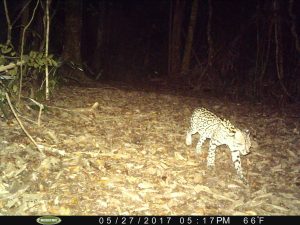
A DEER



It wasn’t a great day for epiphytes 🙁 The only new spots I have to share with you are a few unidentified orchids. They all look the same to me without flowers! I’ll include photos anyway!
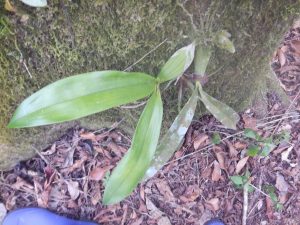

Day 9 was amazing! We didn’t do too many things today, but the things we did were absolutely unforgettable. We had to say goodbye to Adrienne today, which was sad, but she promised to read and comment on all of our blogs 🙂
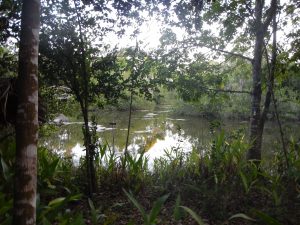
We woke up in the Belize Zoo but left early. We took a bus to the ATM Cave, which was one of the coolest places I have ever been. Sadly, cameras are not allowed in the cave, so I don’t have any photos to show you. We quickly became master spelunkers! We had to swim through the entrance of the cave to access it, and we waded through the freezing water deep into the mountain to see some ancient Mayan artifacts.
The cave was freaky at first, but once we got used to it, we loved crawling through tight spaces and ducking under the overhangs. We begged our guide to take us down the most interesting paths he could! He even made us turn off our headlamps at one point to appreciate the darkness of the cave (it was super cool). To reach the artifacts, we even had to scale a 50(ish) foot rock wall!
At the top of the wall, deep inside the cave, there were many Mayan ceramic pieces and several sets of human remains! They were amazing to see. We even got to see the famed “Crystal Maiden”, although it was recently discovered that she was actually a 16-year-old boy.
When we left the cave after several hours of adventuring, we emerged into a rainstorm in the forest! I was so excited to get the full experience of rainfall in the rainforest. We had to hike for a while and cross several rivers to get back to our bus, and we had a great time splashing and enjoying the water.
On our way to the ecolodge that we are staying in tonight, we stopped in San Ignacio to walk around. We visited a town square and an open air market. What a great city! When we got to the ecolodge, we were extremely excited to find that there are bathrooms in our rooms! We have definitely learned to appreciate the little things.
Sadly, there really weren’t any opportunities for epiphyte sightings today. However, I did give my presentation on epiphytes! Two presentations down, and one to go. Tomorrow is another travel day, but we will finally be arriving at Las Cuevas! Today was a nice tourist-y day, but our break will end as the research continues tomorrow.
Ellie, Isaac, Damien, and I woke up early today to watch the sunrise from the observation tower at Glovers. It was beautiful! The perfect way to end our time at the reef. We’re all very sad to leave the ocean 🙁
We left Glovers around 8 and visited a research station run by the Smithsonian on our way back to the mainland. They had the BEST toilets ever: out on the end of the dock, looking out over the reef crest. Wow! Our last stop before the mainland was Twin Caye, an island of mangroves. We got to snorkel around, and we saw a manatee and a seahorse!
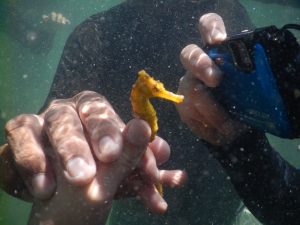
When we got back to Belize City, we headed out to the Belize Zoo, where we are staying the night. We took a hike on a trail, and I saw loads of epiphytes! I could identify some of them, and Adrienne even crossed a river bed to help me. More epiphyte details to come in the following days. Dad – we think we saw a chachalaca!
After dinner, we got to take a night tour of the zoo and see all the nocturnal animals out and about! We got to feed a tapir, see several different owls, and ogle over 4 species of cats. Junior the jaguar did somersaults for us, and I think it was one of the cutest things I’ve ever seen. The ocelot ran over to us and purred, and it reminded me of my kitty back at home. I even got to hold a boa constrictor.

This is our last night staying in the Belize Zoo. I will miss this place! Tomorrow we will head toward Las Cuevas! Mom – We have pretty good wifi here, so I am about to add photos to all my old blogs (If you click on the tag “Jordan” at the bottom of this post, you can see all of them)!
Day 1 in Belize was a major success! We’ve all arrived safely, and traveling was remarkably smooth, considering we have a group of 14 people.
We’re staying at the Belize Zoo tonight. The beds are comfy and bug-free, and dinner involved banana bread. I have no complaints!
In terms of wildlife, I was most excited by the two species of epiphytes I was able to identify from my taxon card research. I feel much better about my identifying abilities already! I even saw my favorite epiphyte, the Shirley Temple plant (it’s small and curly). I also saw Aechmea brachteata.
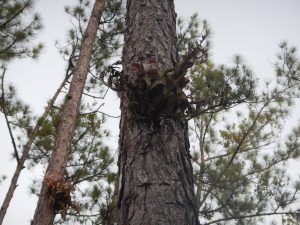

We’ve only been here a few hours, but I’ve already learned so much: pack things inside your boots, don’t try to take pictures as you’re getting off the airplane, hydrate or die-drate, and sometimes things look like deer but they’re really just dogs. Our adventures continue at Glover’s Reef tomorrow, and I’m excited for the new experiences that await us!
As I sit here on my couch watching a segment called “Extreme Ironing” on Ellen, the pre-departure anxiety is starting to set in. Do I have enough sunscreen? What if I have no coral-identifying skills? What if Scott and Adrienne ask us to iron a shirt while kayaking?
While some of these anxieties are slightly more realistic than others, I know that once we’re on our way, my worries will be gone. I have come to terms with the personal fact that sunburn is unavoidable, and I have spent a significant amount of time creating taxon sheets and Powerpoint presentations to help me with identification. I feel pretty prepared for this trip after doing the required readings and extra research.
As an aspiring marine biologist, I am obviously jumping for joy at this opportunity to experience field work at a real coral reef. However, the required readings have gotten me incredibly excited to experience the diversity of the rainforest as well! I honestly can’t pick one thing that I am most looking forward to. My biggest goal for this trip is to get a feel for field research and make sure I would be happy doing it for the rest of my life.
After all this preparation, I cannot wait to get to Belize! I’ve been to the tropics before on family vacations, but I’m thrilled to visit again with the perspective of a researcher, rather than a tourist. I’m excited to see all the things I’ve spent so much time reading about up close and in the flesh, and I’m ready to completely immerse myself in the ecosystems we are there to study. The only thing left to do is pack!
The biodiversity of the rainforest and coral reef is of a scale that we cannot easily comprehend. Even scaled down the Chiquibul forest and Glover’s reef atoll, the sheer number of species that I saw on this trip is crazy. If you narrow it even more to my two taxonomic groups, I still couldn’t tell you about all of the variety that I saw in these two short weeks.
One of the key similarities that I found between the two ecosystems was the high degree of topographical complexity. Not only were they complex, but each tropic layer added complexity in a way that created to what had already been created. For example, the bare sea floor is not a topographically complex area to start with. Over geological time scales, however, reef-building species (stony corals, formerly Acropora palmate) create a much different topography. Onto of this, other stony corals can settle and develop. From this, builds soft coral, sponges and other reef builders/space occupiers. Combined with the tight nutrient cycling and the mutualism with Symbiodinium the actions of stony corals build up to lay the groundwork for a myriad of other taxonomic groups. In the high moisture high heat environment, colonization of this topographically complex area adds and adds. In the rainforest, rather than topographical complexity being created by calcium carbonate laying species, the massive trees create the framework. Similarly, there is a nutrient-poor environment coupled with rapid cycling. These similarities are stark, more obvious than I thought they would be before going on the trip. I didn’t believe that there would such an interchange between turf and surf.
The most interesting thing about marine and terrestrial habitats for me was how similar my two taxonomic groups ended up being. Both epiphytes and soft corals were secondary groups to the dominant builders (trees and stony corals). They gained a lot from the dominant builders. Epiphytes, as plants that grow on other plants, benefit greatly from the topography created by trees. From my observations on the reef, I saw that soft corals were in a general association with the stony corals. I would never have made this association without the EBIO 319 class.
While I expected to be doing longer-term projects in both the rainforest and the reef, the smaller scale definitely allowed us to get a broader understanding of what was going on ecologically in the Chiquibul and Glover’s Reef. I also can’t say how much I loved getting to know the people on this trip. Not only the students, but also the professors, and all staff of the research stations. I am still finding it odd to not be with them right now. My only hope for the course is that next year Scott and Adrienne get to run the EBIO 320 course in Brazil. I would most certainly attend.
In the end, the most valuable thing that I got out this trip was exactly what I hoped I would at the beginning: a higher degree of clarity. I know research is what I want to do. Maybe not in the exact context of Belize, but I certainly enjoyed getting to establish connections in the region. I also gained a much greater appreciation for the surf side of things. Though I do believe that I will be terrestrial focused, I can see a lot more connections to marine life that I did not before. Additionally, lecturing about the topic of NTDs was one of my favorite parts of the trip, leading me to believe that this could be a possible field to pursue. Years from now, I certainly won’t remember the specific of our projects, but I will remember how spending two weeks with this crazy group of sixteen people gave me confidence in myself and my field of choice.